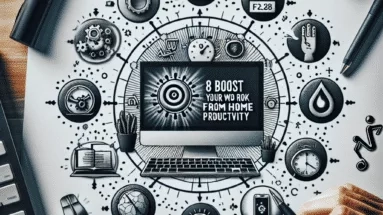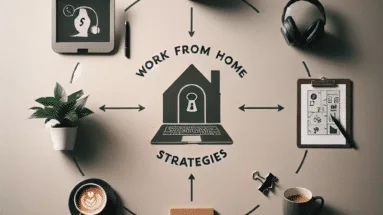
Why the “Always Available” Mentality Is Stopping You From Thriving at Home
1. Understanding the "Always Available" Mindset What Does It Mean to Be "Always Available"? Being "always

1. Understanding the "Always Available" Mindset What Does It Mean to Be "Always Available"? Being "always

Build a Structured Daily Routine Establish a

Creating a Productive Work Environment Choosing the Right Space First things first, having a dedicated workspace is a game-changer. When I first started working from home, I tried working from my couch,

Establish a Dedicated Workspace The Importance of a Designated Area First off, let’s talk about setting up your workspace. When I first started working

Working from home can be a total blessing, but let’s be real—that freedom can sometimes lead us down a slippery slope of bad habits. I’ve been there, trust me. Over

Creating a Dedicated Workspace Setting Boundaries Alright, so let's get real about workspace boundaries. When I first started working from home, my bed looked way too inviting. But here’s the kicker: if

Organizing Your Workspace Creating a Productive Environment Let’s face it, a cluttered desk can mess with your head. When I was starting to work from home, my space was a dumping ground

Create a Dedicated Workspace The Importance of a Defined Work Area Let’s chat about setting up that perfect workspace because, trust me, it can make all the difference. I remember when I

Your Workspace is Organized and Inviting Decluttered Space First off, let me tell you that having a clean space is like the foundation of

Create a Dedicated Workspace Find the Right Spot One thing I've learned from working remotely is that the location of your workspace can greatly impact your productivity. I used to work from

Create a Dedicated Workspace Find the Right Spot I've learned the hard way that your workspace can make or break

Establish Clear Boundaries Communicate Your Hours One of the most important steps I've taken in my work-from-home journey is establishing clear communication about my

Setting Up Your Work Environment Choosing the Right Space Creating a home office is probably the most important step when starting to work from

1. Setting Up Your Home Office Designing Your Space When I first began working from home, I learned quickly that a dedicated workspace is

Not Having a Dedicated Workspace Understanding the Importance of a Workspace When I first started working from home, I didn’t think much about where

Create a Dedicated Workspace Why a Dedicated Space is Key When I first started working from home, I didn't think much about where I

1. Working from Home Means You're Always Available Setting Boundaries One of the biggest misconceptions about working from home is that we’re always on call. Yeah, it might seem like I’m just

The Rigid Structure Can Cripple Your Productivity Setting Boundaries When I first started working from home, the traditional 9-to-5 structure felt like an invisible handcuff. I was bringing all the stress from

Creating a Dedicated Workspace Choosing Your Space Wisely When I first started working from home, I thought I could be productive from anywhere—my couch, bed, or even my kitchen table. But let

Embrace a Structured Routine Why Routine Matters When I first started working from home, I was all about the flexibility. It felt liberating! But